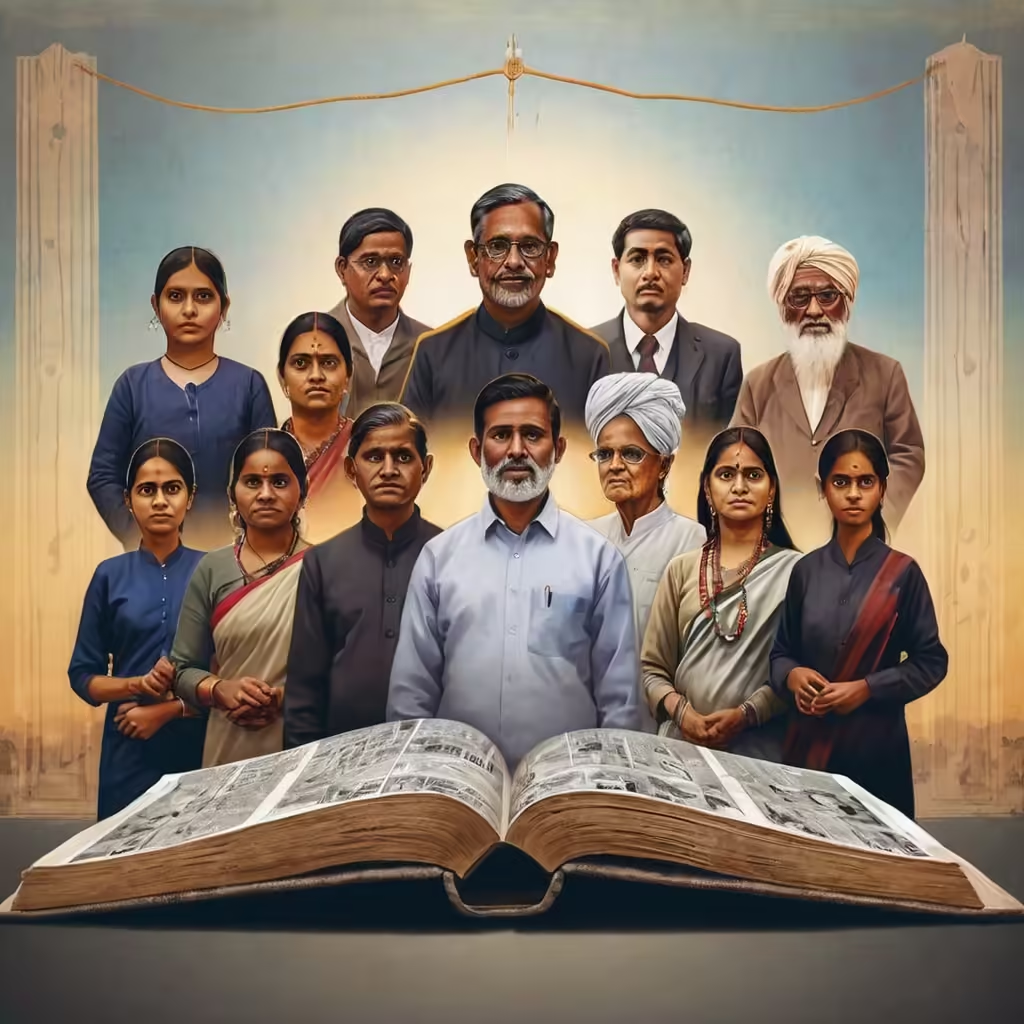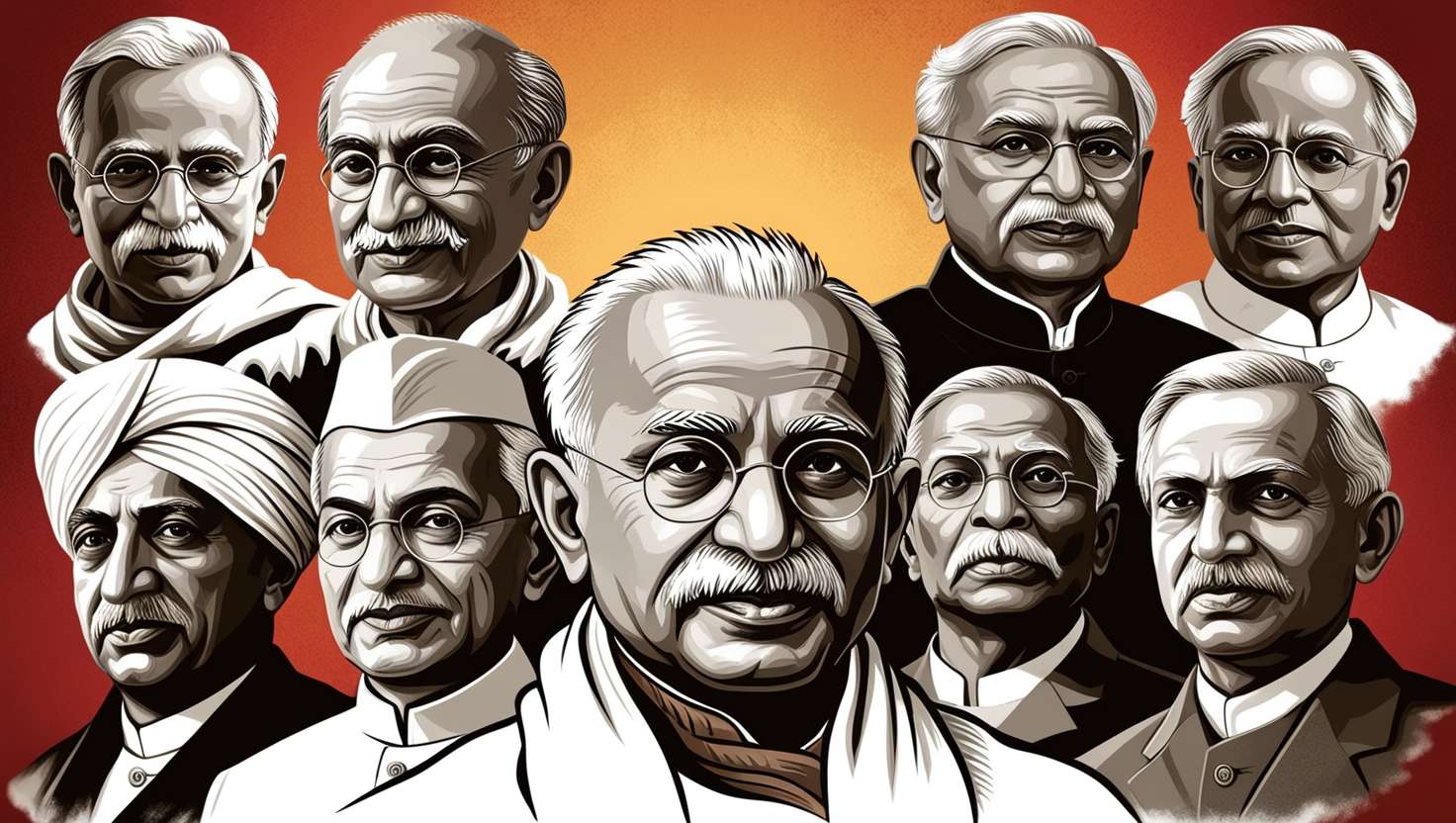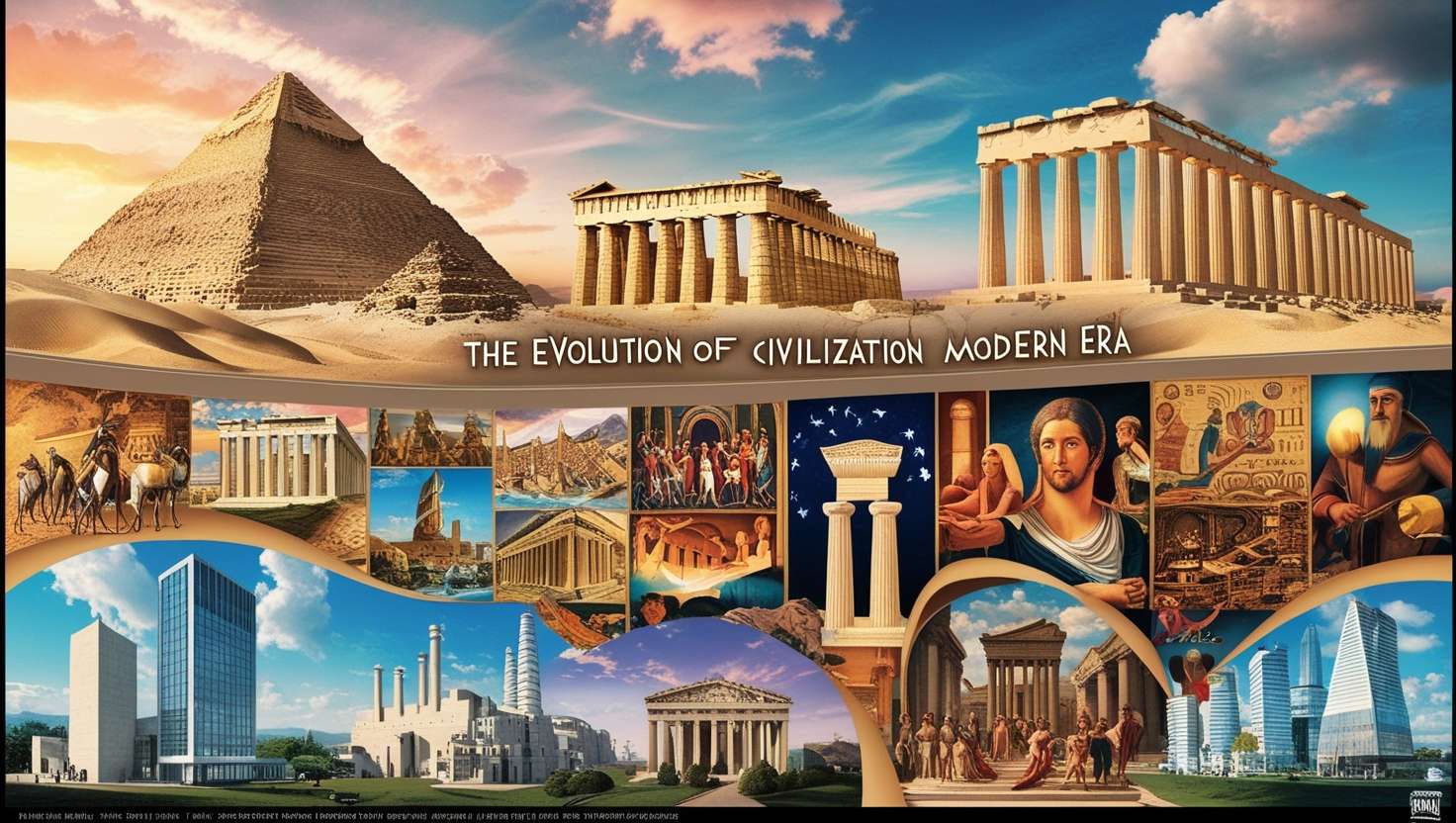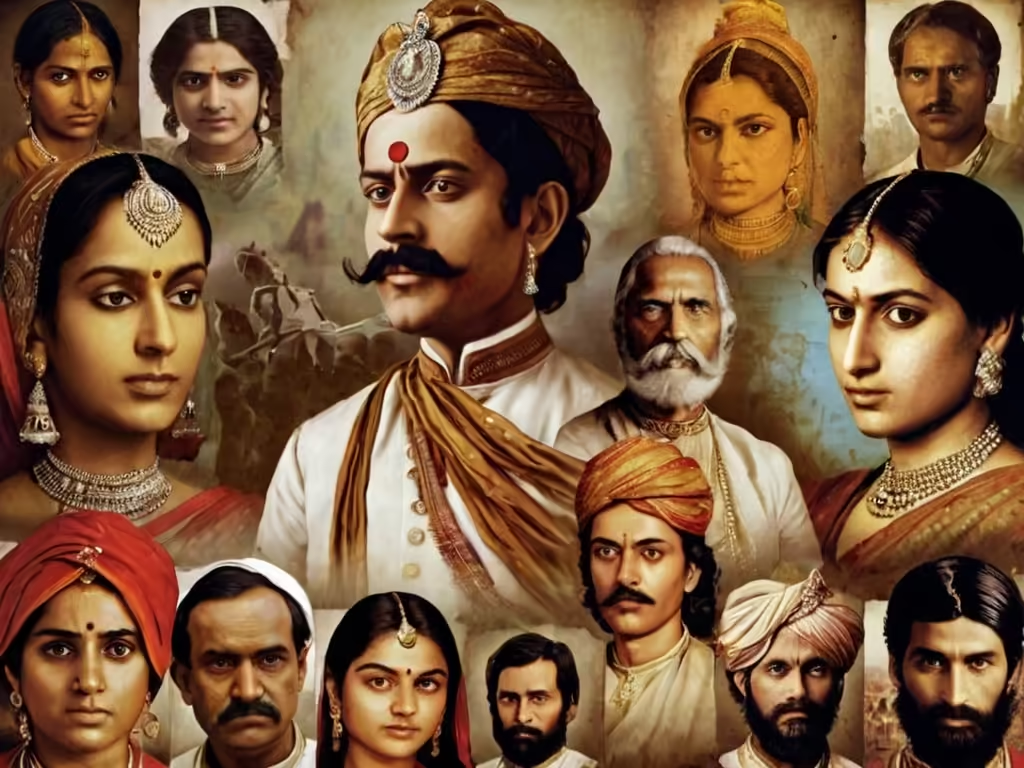Table of Contents
ToggleIntroduction
The Chamar caste, deeply woven into India’s societal fabric, plays a crucial role in the nation’s story. Coming from the Dalit group, they’ve been known for their leather craftsmanship across many years, which has become a core part of who they are. Their last names like Bangar carry deep meanings that shine a light on where they come from and the rich culture they belong to.
Getting to know these surnames helps us appreciate their place in history and how much they’ve added to our society, especially for the Brahmins who have surnames such as Bhatt, Brahmbhatt, Sharma, and Roy.
With names such as Basra and Bhutta popping up too, we get to see just how varied and full of life the community is it’s like looking at an artwork made out of strength and honor. Diving into what these surnames mean opens up stories filled with important historical moments and connections that go way back to the Ramdasi community, who have contributed greatly to the Chamar caste’s rich history.
Chamar Caste Surnames List
| S. No. | Surname | S. No. | Surname |
|---|---|---|---|
| 1 | Aheriya | 23 | Lal |
| 2 | Asari | 24 | Madari |
| 3 | Bangar | 25 | Meghwal |
| 4 | Bhagat | 26 | Meghwanshi |
| 5 | Bharti | 27 | Mochi |
| 6 | Bhure | 28 | Nalband |
| 7 | Bhutto | 29 | Naliya |
| 8 | Chahar | 30 | Nalbandi |
| 9 | Chand | 31 | Natha |
| 10 | Chawal | 32 | Pasi |
| 11 | Dabbu | 33 | Raidas |
| 12 | Dangar | 34 | Rami |
| 13 | Das | 35 | Ravidas |
| 14 | Dehri | 36 | Rehri |
| 15 | Dhuria | 37 | Rohidas |
| 16 | Ghodasara | 38 | Satnami |
| 17 | Jatav | 39 | Shilpkari |
| 18 | Kabirpanthi | 40 | Sinduria |
| 19 | Kalal | 41 | Sunar |
| 20 | Kataria | 42 | Turi |
| 21 | Kori | 43 | Uchaiya |
| 22 | Labana | 44 | Lal |
Important Chamar Last Names to Identify
Bangar, Basra, Bhutta, Chumber, Dugh, Jassal, Kainth, Leer, Mahay, Das, Ramgharia, and Ranu are key surnames in the Chamar caste. These names mean a lot within the Dalit community, showing their work with leather and where they stand in society.
Each name tells its own story of tough times and holding onto who they are, including the surname Bazigar which represents the community of street performers and acrobats. Getting to know these surnames, including Dom, helps us see how rich the culture of the Chamar caste is and what they’ve done for Indian history.
When we remember these names it’s like giving a nod to how diverse and complex life is for people in the Dalit system. It shines a light on just how important they are to India’s social scene. Remembering these surnames, including Dom and Bazigar, pays respect to both past achievements.
1. Bangar
The surname Bangar holds a special place in the Chamar community, representing not just their expertise in leatherwork but also their enduring spirit and rich cultural background. With roots stretching back to places like Himachal Pradesh and Rajasthan, the name carries with it stories of skilled craftsmen who’ve made significant contributions to the leather industry over centuries.
For those bearing this surname within the Dalit caste, it’s more than just a name, it’s a source of identity and pride that echoes through generations. The essence of Bangar goes beyond its literal meaning it captures the hard work, resilience, and perseverance that define the Chamar caste’s journey through history. The surname Bangar is also commonly found among the Berar subcaste of the Chamar community.
2. Basra
Basra is a pretty important last name among the Chamar folks, mainly seen with people who work with leather. The name “Basra” has a lot of history behind it and talks about families known for their skills and tough spirit. It’s not just any surname; it tells you where someone comes from and brings a sense of pride to those in the Dalit caste.
The Basra name really shows off the rich culture of the Chamar community, highlighting how much they’ve added to society while sticking together through tough times. In the big picture of India’s caste system, having the Basra surname means being part of something bigger a sign that unites people in the Chamar community.
3. Bhutta
The last name “Bhutta” means a lot to the Chamar folks, showing who they are and where they come from. It comes from the Dalit caste and is all about their history with leather making and being really good at it. This last name talks about how tough yet skilled these people have been for ages.
In places like Himachal Pradesh and around India, when you hear Bhutta, it tells you something special about the Chamar community’s long-standing customs and what they’ve given to society. Being deeply linked with the Dalit community, having the Bhutta surname is like wearing a badge of honor that speaks volumes of India’s diverse groups within its big social scene.
SEE ALSO : FRESH AND DELICIOUS – SPROUTS SALAD RECIPE
4. Chumber
The Chumber surname, also known as Jatia Chamar, is a significant identifier in the Chamar caste, particularly among those who excel in the traditional occupation of leatherworking. This name originated in regions like Himachal Pradesh and Rajasthan and holds great importance in the Dalit community. These surnames not only serve as identifiers but also reflect the diverse cultural backgrounds within the Chamar caste.
With a large population residing in areas such as Maharashtra and Jammu, carrying the last name Chumber signifies strength and a strong sense of identity within India’s society. People with this surname contribute to the rich traditions and customs preserved by the Chamar community through their skilled craftsmanship and family heritage as cobblers.
5. Dugh
The Dugh surname holds a lot of importance among the Chamar caste, especially for those who work with leather. It comes from an old Sanskrit word “dugdha” which means something like milk or milky. This name has deep roots and tells us about the jobs people had in society back then. You’ll find a lot of folks with the Dugh last name in places like Himachal Pradesh and Rajasthan, where it’s a big part of their culture and shows off their skills in craftsmanship.
The history behind this surname goes all the way back to ancient texts called Vedas, showing how strong and enduring the Chamar community has been through time. By looking into what ‘Dugh‘ signifies, we get to appreciate more about both past roles within societies as well as celebrate cultural heritage tied to names within communities such as Dalit. The surname Rao is also commonly adopted by the Chamar community, inspired by B. R. Ambedkar.
6. Jassal
The Jassal surname is pretty important in the Chamar caste, showing off their long history and cultural roots. It’s all about leatherwork and making things by hand, which are skills that have been handed down from one generation to the next. For people with this surname, it means a lot because it connects them to the Dalit community, highlighting their strength and determination despite tough times in history.
When you hear “Jassal” it brings people together, creating a strong sense of unity within the Chamar community, showcasing the resilience and pride of the jatt people. This name captures everything from old traditions to how they fit into today’s world, painting a picture of both where they’ve come from and where they’re going.
7. Kainth
Kainth is a well-known surname among the Chamar caste, deeply rooted in the Dalit community. This name, derived from the Sanskrit word “kaur” meaning “princess” has historical importance, especially within the Bahujan Samaj Party and is linked to places like Himachal Pradesh and India as a whole.
The Kainth surname showcases the strength and rich cultural background of the Chamar folks, highlighting their impact on local traditions and their unique identity within society regardless of their caste, creed, colour or religion.
As time passed, this surname has come to represent the journey of those belonging to it, particularly in the Hindi-speaking regions of Punjab and neighboring states. With its strong history tied closely with customs, Kainth serves as evidence of this group’s lasting resilience.
By holding onto both old ways and new changes alike, people with this last name keep contributing significantly towards keeping alive their unique identity within society.
8. Leer
Leer is a pretty important last name in the Chamar community, and it’s got a lot of history behind it. This surname usually points to someone being involved in leather work or similar kinds of jobs that have been around for ages. When you think about the Dalit caste, names like Leer really shine a light on the deep cultural roots and skills these folks have developed over time to make ends meet. It’s more than just a name; it tells you about generations of people who’ve shown incredible strength and talent in their crafts.
With surnames such as Leer floating around, we’re reminded how crucial it is to appreciate what the Chamar community has brought into India’s big mix of cultures, especially when talking about their unique contributions and rich traditions.
9. Mahay
The last name “Mahay” is pretty important to the Chamar caste. It’s like a badge of who they are and where they come from. Back in the day, people with this surname were known for working with leather, which was a big deal in their community. For folks in the Dalit caste, having the Mahay surname is more than just a name; it’s about pride and remembering their roots.
Over time, despite all sorts of challenges society threw at them, this surname has stood strong. By keeping it alive, people celebrate not just their family history but also honor how much the Chamar community has added to Indian culture.
10. Ranu
The Ranu surname is pretty important in the Chamar community. It’s like a big part of who they are and where they come from, showing off their long history and culture. People with this last name have done a lot for society over time, making life richer for everyone in the Dalit caste. The Ranu name isn’t just any old name; it stands strong as a sign of never giving up, really capturing what the Chamar folks are all about.
When someone carries the Ranu surname, it means they’re connected to an amazing heritage full of skilled craftsmanship and traditions that go way back because of their work with leather and other crafts. By using or respecting the Rananame,surname you’re basically tipping your hat to everything great thatthe chamar castehas brought into our world cementing its place within bothchamarcultureanddalitsociety at large.
Historical Significance and Origins
The story behind the surnames of the Chamar caste is really fascinating and tells us a lot about India’s rich cultural background. These names are more than just labels; they’re like windows into the community’s past, often showing what their ancestors did for a living or where they came from. As time went on, these surnames became a big part of how people in the Dalit community see themselves and celebrate their culture and history.
The Chamars, also known as Singh Chamars, have shown incredible strength and togetherness while dealing with tough times, which you can see reflected in their family names such as Sharan. They carry stories of resilience that have been passed down through many generations.
By diving into why Chamar caste surnames are what they are, we get to uncover some complex parts of India’s social evolution and witness the unbreakable spirit its people share.
Roots of the Chamar Surnames
Chamar surnames mean a lot to the Dalit community, showing their long history and where they stand in society. These names started from jobs dealing with leather and other old skills. With time, these surnames have come to show strength and pride despite facing tough times and unfair treatment. The Chamar group is mainly found in places like Himachal Pradesh and Rajasthan, adding their special customs to the local culture there.
Even though they’ve been treated unfairly for a long time, Chamar surnains still play a big role in their culture today, connecting them with who they are and where they come from. Getting to know why these names came about helps us understand more about the rich background of the chamar caste within dalit community traditions.
Evolution Over Time
Over time, the surnames of the Chamar caste have really changed a lot. This change tells us a story about how society and history have mixed together to shape them. These names didn’t just switch up overnight; they slowly evolved as people in the Chamar community dealt with different challenges and changes in culture.
It’s pretty amazing to see how flexible and strong this community has been, always finding ways to fit into new times while holding onto their roots. When we look at how these surnames have transformed, it’s like uncovering a treasure chest full of stories from the past that highlight both where they’ve come from and where they’re heading.
This whole process gives us deep insights into who they are as a group, how their identities were built over many years and heavily influenced by big events throughout history.
Geographic Distribution Across India
Across India, the Chamar caste surnames are spread far and wide, showing just how big this community is. From up in Himachal Pradesh to over in Maharashtra on the west coast, you’ll find Chamars everywhere doing all sorts of jobs. In places like Jammu and Kashmir, Rajasthan, and Punjab, their last names, such as Prasad, Narayan, and Varma, are a big part of what makes local cultures so special.
It tells us they’ve been important there for a long time. Down in Uttar Pradesh and Bihar too, these surnames mean a lot when it comes to social issues or politics within the Dalit community.
This shows us that no matter where you go in India from north to south or east to west – Chamars, like Prasad, Narayan, Varma, Kumar, and Devi, have played an essential role throughout history by sticking together through thick and thin while keeping their culture alive.
Predominant Regions
The Chamar caste is really good at working with leather and you can find them all over India. They’re in places from Himachal Pradesh to Maharashtra, and even from Jammu to Rajasthan, where they are known as Julahas.
This community has also left its mark on Punjab, Kashmir, and surprisingly, parts of Germany too. Being part of the Dalit community, their skills and traditions have a long history that’s deeply rooted in ancient practices. The Julahas have managed to make a strong impact in various areas across the country showing how tough they are as well as how rich their cultural heritage is.
Their traditional jobs and roles within society explain why they are found mainly in these regions which underlines just how important they are to India’s social scene.

Influence on Local Cultures
For generations, the Chamar caste has really made a mark on local cultures with their amazing leatherwork and craftsmanship skills. These talents, handed down through families, have done more than just shape how money is made; they’ve added rich layers to the culture of places like Himachal Pradesh and Rajasthan.
In these areas, what the Chamar caste brings to the table is crucial for keeping traditional ways alive and kicking. Their work goes beyond just jobs; it influences social vibes and boosts pride among folks in the Dalit community.
You can see this cultural impact in how closely tied together the Chamar caste’s craftmanship is with regional heritage, showing a strong bond between making things by hand and local identity.
Additionally, the political rise of influential Chamar politicians, such as Jagjivan Ram, has also played a role in shaping the local cultures and promoting the community’s values and traditions.
Conclusion
To wrap things up, it’s really important to know the key surnames of the Chamar caste because they tell us a lot about their rich culture and history. Surnames like Bangar, Basra, Bhutta show where they came from mainly working with leather but also how strong and united the Dalit community is.
With these names popping up all over India, from Himachal Pradesh to Maharashtra, we see just how big a part the Chamar caste plays in society. These names have lasted through time, keeping their unique identity while adapting along the way.
By looking into where these surnames come from and what they mean for society today helps us understand just how much the Chamar caste has contributed to Indian culture as a whole.
FAQ'S
Dhania, Ranga, Johal, Dahiya, Gahlot, Mahandirata, Mehndi, Muwaal, Nimbhoria, Rao, Soann, Chouhan, Sanpat, Basanpal, Saroya, Bal, Bhola, Rattu, Klair, Virdi, Toora, Salhan, Ravi, Summan, Sehgal, Saroa, Chopra, Simar, Bhatti, Ratti, Mehra, Plethu, Dhirana, Kataria, Duggal, Virk, Walia, Sohpal, Soni and so more…
Getting to know the history behind “Chamar” helps us see its importance in Indian culture, especially when it comes to jobs related to working with leather and tanning. The word reflects a strong sense of endurance and skillfulness that’s been part of the community for ages.
In today’s world, Chamar surnames play a crucial role by keeping cultural identity and heritage alive. They come into play during social gatherings, on official papers, and at community events, creating a feeling of unity and pride among people. By holding onto these surnames, individuals show their strong ties to the traditions and history of the Chamar community.
In many countries outside of India, where the Indian diaspora has made their home, you can find Chamar surnames. These names are more than just labels; they’re a bridge to the Chamar community’s rich cultural heritage and identity that stretches across borders.
Find out about important people with Chamar last names such as Bangar, Basra, Bhutta, Chumber, Dugh, Jassal, Kainth, Leer Mahay and Ranu. Learn how they’ve made significant contributions in different areas.




5 thoughts on “Top Chamar Caste Surnames List”